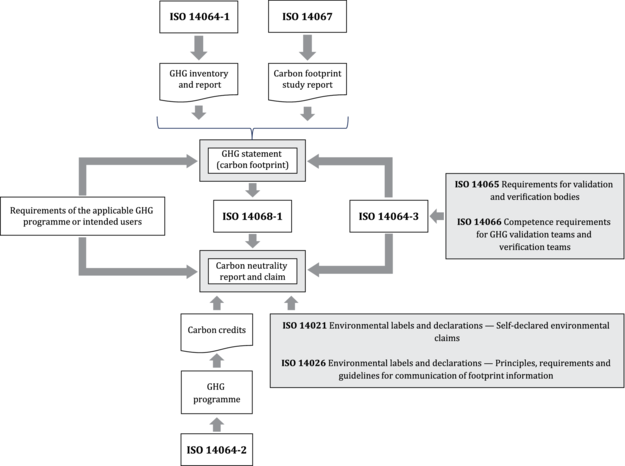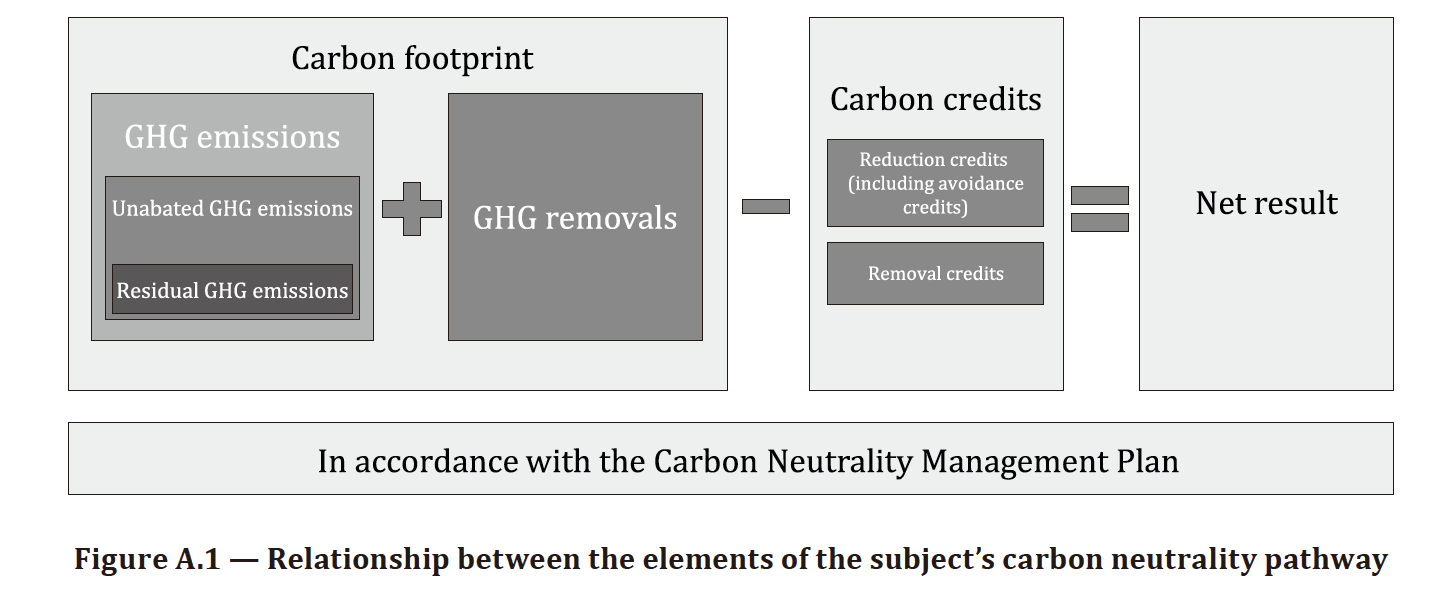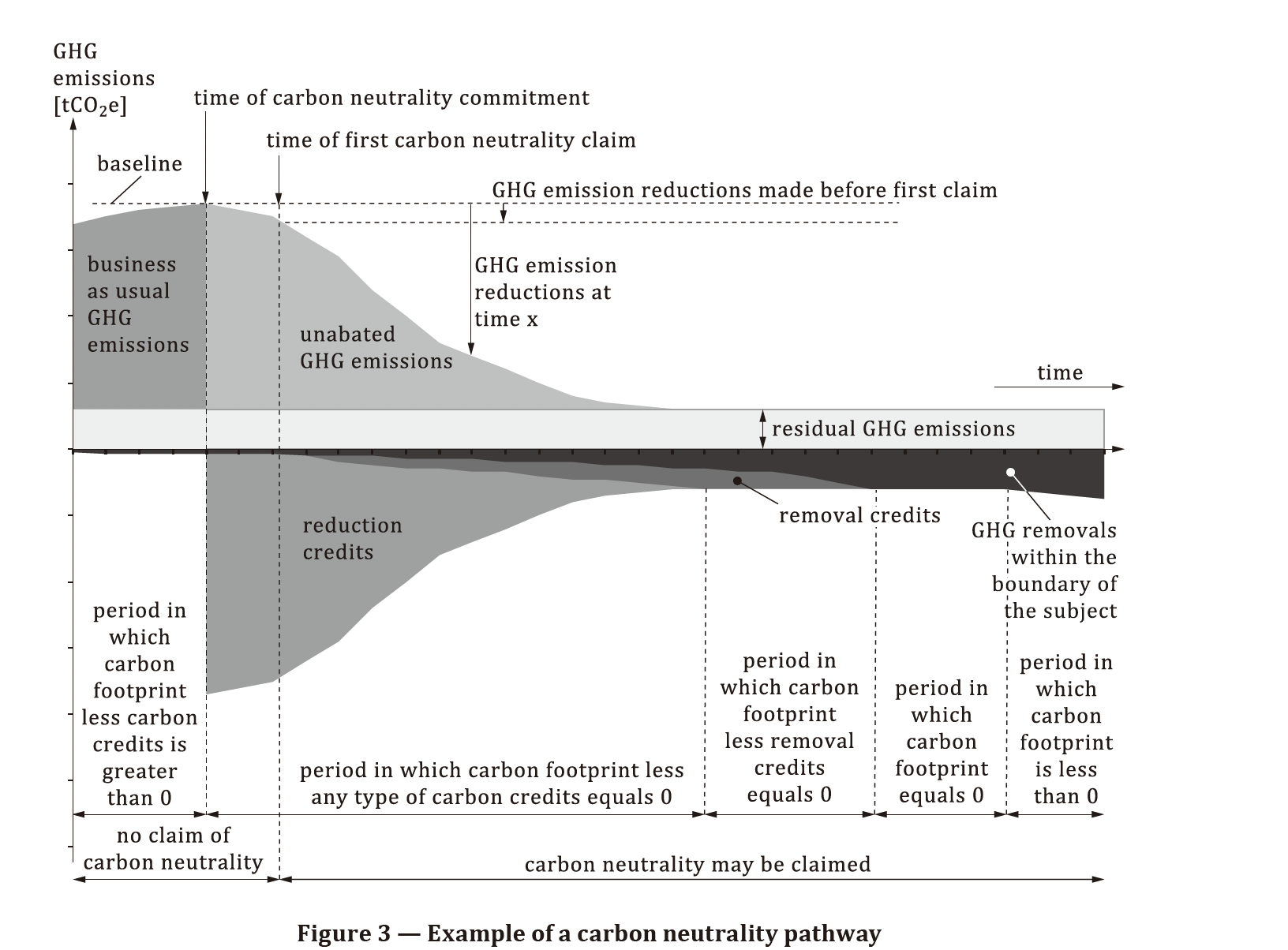In November 2023, the latest international carbon neutrality standard, ISO 14068-1:2023 "Climate Change Management - Transition to Net Zero - Part 1: Carbon Neutrality", was officially released. This standard will replace the previously widely used PAS 2060:2014 carbon neutrality standard, providing organizations and products (including buildings and activities) with standardized methods for achieving and demonstrating carbon neutrality.

source:ISO official website
It's worth mentioning that recently, Carbon Newture helped Zhongding Textile obtain the world's first product carbon neutrality certificate based on the ISO 14068-1:2023 standard within three weeks (issued by the internationally recognized authoritative third-party certification body TÜV Süd, click here for details). The carbon information of the products has been publicly disclosed on the "International Carbon Disclosure Platform for Textile and Apparel", achieving high transparency of product carbon information. This move not only helps endorse the company's "non-greenwashing" low-carbon actions but also promotes the construction of a green and sustainable supply chain in the textile and apparel industry, thereby maintaining a more benign low-carbon consumption market.
01 The Origin, Status, and Key Content of ISO 14068-1:2023
Understanding the origin of ISO 14068-1:2023 starts with an overview of ISO, ISO/TC207 (Technical Committee for Environmental Management), ISO 14000 series standards, and ISO 14060 series standards.
ISO: The International Organization for Standardization is a global non-governmental organization established in 1947. It comprises 170 member countries and over 340 technical committees. ISO facilitates international trade and services by developing internationally recognized standards, thereby reducing trade barriers.

Today's ISO (Source: ISO Official Website)
ISO/TC207: ISO established ISO/TC207 (Technical Committee for Environmental Management) in June 1993, formally initiating the development of environmental management series standards. Its purpose is to standardize the environmental performance of activities, products, and services of all organizations, including businesses and social groups, to support global environmental protection efforts and sustainable development. Since 1996, the ISO 14000 series environmental management standards have been gradually promulgated.
ISO 14000 Series Environmental Management Standards: Within this series, the ISO 14040 series (Life Cycle Assessment) and the ISO 14060 series (Greenhouse Gas and Climate Change Management) are highly relevant to greenhouse gas management and are most frequently used by carbon management personnel.
ISO 14060 Series Standards: This series provides clear and consistent guidance for quantifying, monitoring, reporting, verifying, and validating greenhouse gas emissions and removals, as well as achieving carbon neutrality. It benefits organizations worldwide, greenhouse gas project proponents, and stakeholders. Standards within this series include ISO 14064 (Greenhouse Gas Accounting and Verification), ISO 14067 (Product Carbon Footprint), and ISO 14068 (Carbon Neutrality Standards, consisting of three parts; ISO has currently only developed and published the first part of the Carbon Neutrality Standard, ISO 14068-1:2023).
The Status of ISO 14068-1:2023: ISO 14068-1:2023, the Carbon Neutrality Standard, is established based on ISO 14060 series standards such as ISO 14064-1, ISO 14064-3, and ISO 14067. It outlines the principles, requirements, and guidelines for achieving and demonstrating carbon neutrality through quantifying, reducing, and offsetting carbon footprints. It provides a standardized method for entities to achieve and demonstrate carbon neutrality and is applicable to organizations and products. The diagram below illustrates its relationship with other international standards, with ISO 14068-1:2023 positioned at the center. This is because the purpose of developing this standard aligns closely with the ultimate goal of carbon management for various entities—achieving carbon neutrality.

The Relationship of ISO 14068-1:2023 with Other International Standards (Image Source: ISO Official Website)
Main Contents of "ISO 14068-1:2023":
🔹 Scope: Applicable to organizations (including companies, local governments, and financial institutions) and products (goods or services, including buildings and activities), but not applicable to regions (such as territories, countries, states, or cities).
🔹 Principles and Requirements: Provides a series of principles and requirements (such as hierarchical structures) for achieving and demonstrating carbon neutrality.
🔹 Terminology Definitions: Clarifies terms related to carbon neutrality, GHG, carbon offsetting and credits, carbon neutral entities, etc.
🔹 Action Guidance: Provides guidance on actions required to achieve and demonstrate carbon neutrality (such as carbon neutral workflow).
🔹 Emissions Reduction and Removal Priority: Clarifies the hierarchy for achieving carbon neutrality, with prioritization given to reducing greenhouse gas emissions (both direct and indirect) and enhancing greenhouse gas removal within the value chain over carbon offsetting.
🔹 Carbon Neutrality Commitments, Statements, and Reporting: Includes requirements for carbon neutrality commitments, reporting, and carbon neutrality statements.
02 The breakthrough and significance of "ISO 14068-1:2023"
After the release of "ISO 14068-1:2023," it will replace the widely used carbon neutrality standard "PAS 2060:2014" both domestically and internationally (after a transition period of 24 months, PAS2060 will become invalid by the end of December 2025). The transition period allows entities using this standard sufficient time to adjust (entities such as Mengniu, Danone, Budweiser, Ningde Bangpu Recycling Technology Co., Ltd. and Sichuan Contemporary Amperex Technology Limited, Bentley, among others have validated their carbon neutrality using "PAS 2060:2014").
Drawing from the practical experience of "PAS 2060:2014," "ISO 14068-1:2023" provides a comprehensive framework and guidance for carbon neutrality actions for enterprises, including a rigorous carbon neutrality hierarchy and a clear path to carbon neutrality implementation.
🔸01 Carbon Neutrality Hierarchy requires that carbon neutrality measures be implemented in the following priority order:
1) Reduce greenhouse gas emissions within the entity boundary (emission reduction);
2) Enhance greenhouse gas removal within the entity boundary (enhanced removal);
3) Offset residual greenhouse gas emissions (offsetting).
That is, emission reduction and enhanced removal (emission reduction and removal) must occur and take precedence over offsetting. Furthermore, over time, the amount of carbon credits used to offset residual greenhouse gas emissions should gradually decrease.
🔸02 The methods and pathways for achieving carbon neutrality are as follows:
The achievement of carbon neutrality is verified through the following formula: subtracting the carbon credits used from the entity's carbon footprint, if the result is less than or equal to 0, it is considered to have achieved carbon neutrality.

Relationship among elements for achieving carbon neutrality (source: ISO 14068-1:2023)
The core of ISO 14068-1:2023 is to establish a comprehensive carbon neutrality management plan, no longer treating carbon neutrality as the achievement of an entity within a specific period. This enables enterprises to clearly define the carbon neutrality path, supporting, achieving, and maintaining carbon neutrality while meeting the carbon neutrality hierarchy (i.e., prioritizing emissions reduction and enhancement over offsetting). Additionally, the carbon neutrality path should encompass short-term goals (5-10 years), long-term goals (at least 20 years), and years containing only residual GHG emissions. The following diagram illustrates an example of a carbon neutrality path:

Carbon Neutrality Path Example (Image Source: ISO 14068-1:2023)
At the same time, ISO 14068-1:2023 requires that the carbon neutral pathways set by enterprises be based on universally accepted scientific approaches, such as those validated by the Intergovernmental Panel on Climate Change (IPCC), the International Energy Agency (IEA), Assessing Low Carbon Transition (ACT), Science Based Targets initiative (SBTi), and other institutions. Based on this foundation, enterprises should consider their industry's carbon neutral pathways as well as specific characteristics and backgrounds, making necessary adjustments.
In addition, ISO 14068-1:2023 divides the carbon neutral pathways into two stages:
Early phase: This phase is characterized by the presence of unabated GHG emissions, and any type of carbon credit (including avoidance credits, reduction credits, and removal credits) can be used to offset the carbon footprint. During this phase, enterprises begin implementing measures to reduce greenhouse gas emissions and enhance greenhouse gas removal in accordance with the carbon neutral management plan, aiming to reduce the carbon footprint of the relevant entities.
Later phase: In this stage, the entity is left with only residual GHG emissions, which are gradually offset by higher quality carbon credits—removal credits. Alternatively, the entity achieves zero or negative greenhouse gas emissions without using any carbon credits.
03 What impact will ISO 14068-1:2023 have on enterprises?
There is no doubt that ISO 14068-1:2023 is a more stringent and aligns better with the current trends and processes of carbon neutrality. It not only provides a comprehensive framework for carbon neutrality but also offers scientific guidance for enterprises to achieve their carbon neutrality goals through carbon neutrality pathways. Moreover, it imposes higher levels of management and implementation requirements on enterprises.
Enterprises should understand that carbon neutrality is a long-term, dynamic process rather than the result of a specific period (for example, a factory receiving a carbon neutrality certificate issued by an authoritative third-party certification body in 2023 only indicates that the factory achieved carbon neutrality during that year, not before or after 2023). Therefore, it is necessary to strictly formulate carbon neutrality management plans and implement carbon neutrality measures. Enterprises that have previously achieved carbon neutrality certification through the PAS 2060:2014 standard should pay attention to its validity period (typically specific production batches for products and one year for operations) and actively cooperate with standard updates and certificate renewals. Enterprises intending to undergo carbon neutrality verification in the future should promptly acquire knowledge of the latest standards and keep abreast of international certification environment changes.
Currently, the most contentious issue for enterprises to achieve carbon neutrality (at both product and operational levels) lies in the use of carbon credits to offset carbon emissions. The PAS 2060:2014 standard does not provide detailed requirements for the use of carbon credits, while the latest ISO 14068-1:2023 clearly outlines the hierarchy of carbon neutrality (emphasizing emission reduction and enhancement of carbon removal over offsetting) and requires the use of removal credits only in the later stages of carbon neutrality. At present, the standard allows the use of any type of carbon credit to offset unabated greenhouse gas emissions in the early stages, which can be understood as emissions that remain unavoidable even after employing all currently available technically and economically feasible emission reduction technologies. Therefore, enterprises should carefully select carbon credits that are genuine, additional, permanent, and meet the requirements of the development stage for carbon offsetting during the carbon neutrality process.
In recent years, the phenomena of "greenwashing" and "hidden green" have been increasingly common. With consumers and other stakeholders paying more attention to the transparency and authenticity of carbon information, ensuring that "carbon neutrality" is scientifically credible rather than being challenged and questioned has become a crucial consideration for enterprises aiming to achieve carbon neutrality and sustainable development.
Greenwashing: A deceptive marketing tactic aimed at making people believe that the products, goals, and policies of an organization are more environmentally friendly than they actually are.
Hidden green: In contrast to "greenwashing," when a company conceals information about its sustainability achievements out of a desire to avoid "greenwashing" lawsuits and criticism for not doing enough, even if the company is moving in the right direction. This can lead to consumers and other stakeholders being unable to understand the actual progress and being deprived of positive incentives.
The launch of "ISO 14068-1:2023" has to some extent unified the current confusion surrounding methods and principles for achieving carbon neutrality. Certification from authoritative third-party verification bodies based on this standard may become an effective tool for avoiding "greenwashing" and "hidden green," thereby earning the trust of consumers and the favor of downstream customers.
Based on this, Carbon Newture combines its own digital technology advantages and the expertise of its dual carbon expert team to provide enterprises with training services for standard interpretation and certification services for carbon neutrality. Leveraging its robust technology and platform, Carbon Newture helps clients formulate carbon neutrality strategic goals that align with international and domestic standards and their own development needs, optimize carbon neutrality pathways, establish carbon management systems, and select high-quality carbon credits, assisting clients in obtaining internationally recognized carbon neutrality certifications.